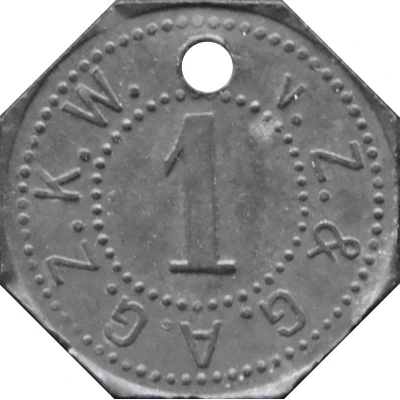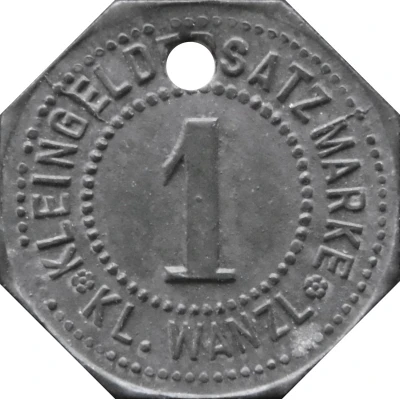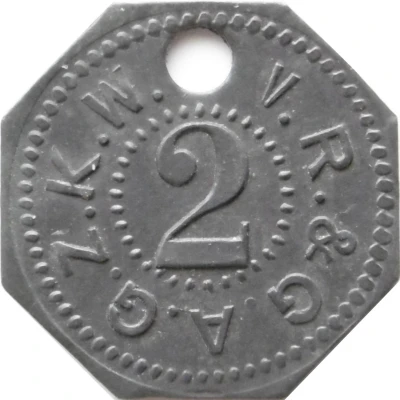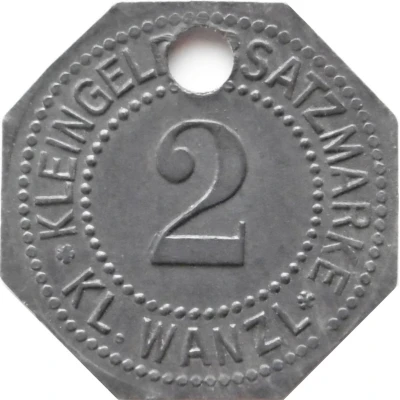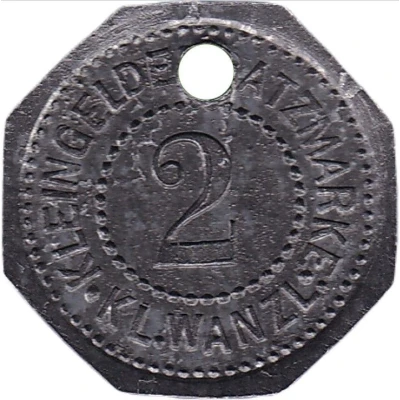
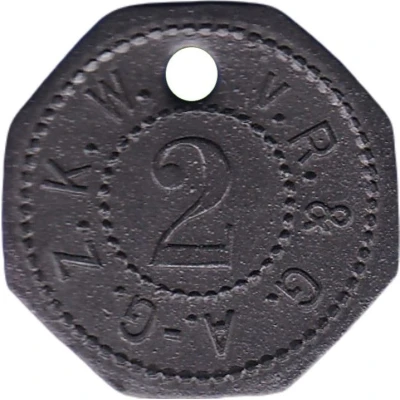

© gyoschak (CC BY-NC-SA)
2 Pfennigs - Klein-Wanzleben (Z.K.W.v.R. and G. A.-G.) ND
| Zinc | 1.33 g | 18.2 mm |
| Issuer | Municipality of Klein Wanzleben (Prussian province of Saxony) |
|---|---|
| Type | Standard circulation coin |
| Value | 2 Pfennigs (2 Pfennige) (0.02) |
| Currency | Mark (1914-1924) |
| Composition | Zinc |
| Weight | 1.33 g |
| Diameter | 18.2 mm |
| Thickness | 1.1 mm |
| Shape | Octagonal (8-sided) with a hole (Hole 2.5mm) |
| Technique | Milled |
| Orientation | Medal alignment ↑↑ |
| Demonetized | Yes |
| Updated | 2024-10-04 |
| Numista | N#191854 |
|---|---|
| Rarity index | 92% |
Reverse
Pearl rim, Legend circling, pearl circle with denomination centered
Script: Latin
Lettering:
2
Z.K.W. V.R. & G. A.-G.
Edge
Plain
Comment
(Menzel: BBB)Z.K.W.v.R. & G. A.-G. = Zuckerfabrik Klein-Wanzleben vormals Rabbethge & Giesecke Aktien-Gesellschaft
Notgeld from a Sugar Factory in city of Wanzleben
Interesting fact
The 2 Pfennigs coin from Klein-Wanzleben was minted during a time of economic turmoil in Germany, specifically during the hyperinflation period of the 1920s. At that time, the value of the German mark plummeted, and many people struggled to afford basic necessities. In response, the government introduced a new currency, the Rentenmark, which was pegged to gold and was intended to stabilize the economy. The 2 Pfennigs coin was part of this new currency system and was used widely in everyday transactions. Despite the economic challenges of the time, the coin remains a fascinating piece of history and a testament to the resilience of the German people.
